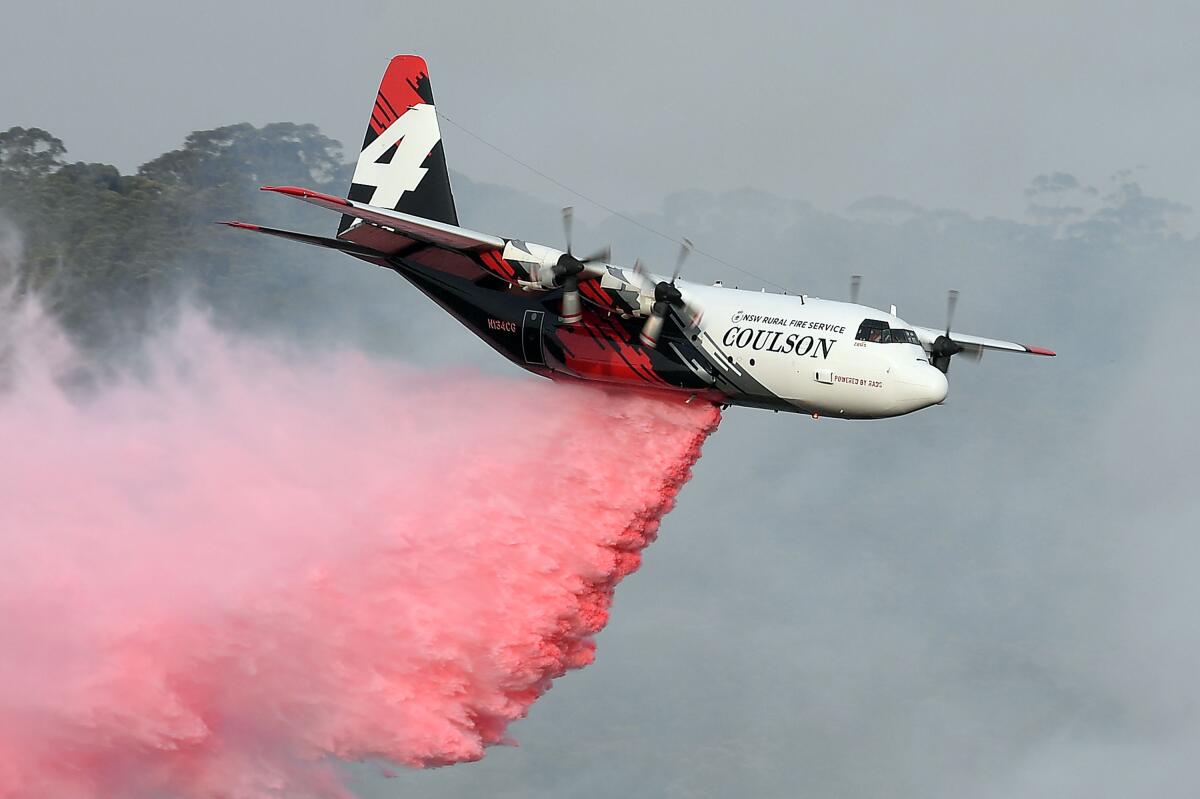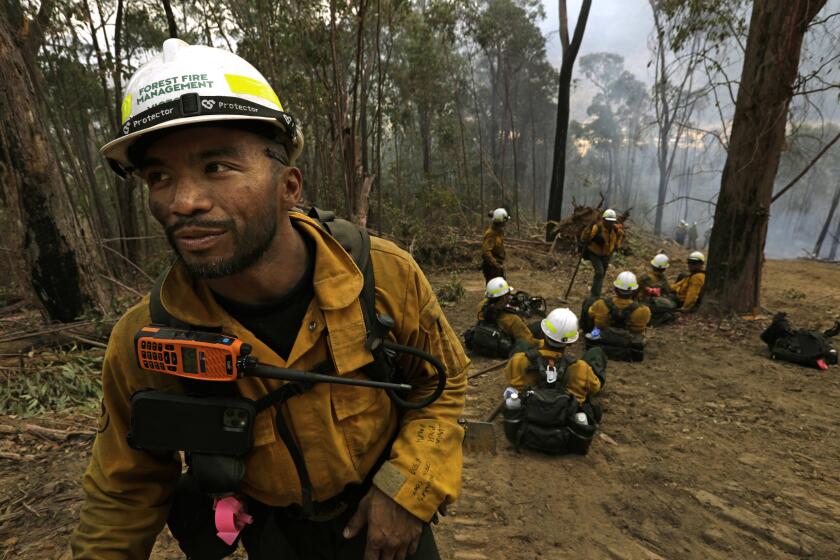Three Americans killed as C-130 firefighting plane crashes in Australia

- Share via
CANBERRA, Australia — Three American crew members died Thursday when a C-130 Hercules aerial water tanker crashed while battling wildfires in the Snowy Monaro region of southern Australia’s New South Wales state, officials said.
New South Wales Premier Gladys Berejiklian confirmed the deaths and crash in comments to reporters as Australia attempts to deal with an unprecedented fire season that has left a large swath of destruction.
Coulson Aviation of Oregon said in a statement that one of its C-130 Lockheed large air tankers was lost after it left Richmond in New South Wales with three aboard, carrying retardant for a firefighting mission. It said the accident was “extensive” but had few other details.
“The only thing I have from the field reports are that the plane came down, it’s crashed, and there was a large fireball associated with that crash,” New South Wales Rural Fire Service Commissioner Shane Fitzsimmons said.
Foreign Minister Marise Payne said she had conveyed Australia’s condolences to U.S. Ambassador Arthur Culvahouse Jr.
“Our hearts go out to their loved ones. They were helping Australia, far from their own homes, an embodiment of the deep friendship between our two countries,” she said in a statement.
“Thank you to these three, and to all the brave firefighters from Australia and around the world. Your service and contribution are extraordinary. We are ever grateful,” she added.
More than 170 U.S. firefighters are helping their Australian counterparts battle the nation’s worst blazes ever, an assignment that requires adjustment to a new terrain, culture and lingo.
The crash brings the death toll from the blazes to at least 31 since September. The fires have also destroyed more than 2,600 homes and razed more than 25.7 million acres, an area bigger than the state of Indiana.
Coulson grounded other firefighting aircraft as a precaution pending investigation, reducing planes available to firefighters in New South Wales and neighboring Victoria state. The four-propeller Hercules drops more than 4,000 gallons of fire retardant in a single pass.
Spokeswoman Robyn Baldwin of Coulson, with headquarters in the Canadian province of British Columbia and extensive U.S. operations, declined to identify the crew members or say what U.S. states they were from.
“We ask for privacy at this time as we mourn the loss of our crew members,” Baldwin said.
Australian Transport Safety Bureau, the national air crash investigator, and state police will investigate the crash site, which firefighters described as an active fire ground.
“There is no indication at this stage of what’s caused the accident,” Fitzsimmons said.
Berejiklian said there were more than 1,700 volunteers and personnel in the field, and five fires were being described at an “emergency warning” level — the most dangerous on a three-tier scale — across the state and on the fringes of the national capital Canberra.
Also Thursday, Canberra Airport was temporarily closed because of nearby wildfires, and residents south of Australia’s capital were told to seek shelter. The airport reopened after several hours with Qantas operating limited services, but Virgin and Singapore Airlines canceled flights for the rest of the day.
The blaze started Wednesday, but strong winds and high temperatures caused conditions in Canberra to deteriorate. A second fire near the airport that started Thursday morning was at the “watch and act” level, officials said.
Residents in some Canberra suburbs were advised to seek shelter and others to leave immediately.
“The defense force is both assisting to a degree and looking to whether that needs to be reinforced,” Defense Minister Angus Campbell told reporters.
“I have people who are both involved as persons who need to be moved from areas and office buildings that are potentially in danger, and also those persons who are part of the [Operation] Bushfire Assist effort,” he said.
More to Read
Sign up for Essential California
The most important California stories and recommendations in your inbox every morning.
You may occasionally receive promotional content from the Los Angeles Times.











